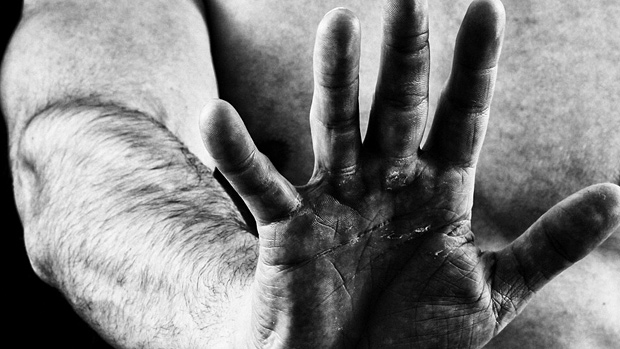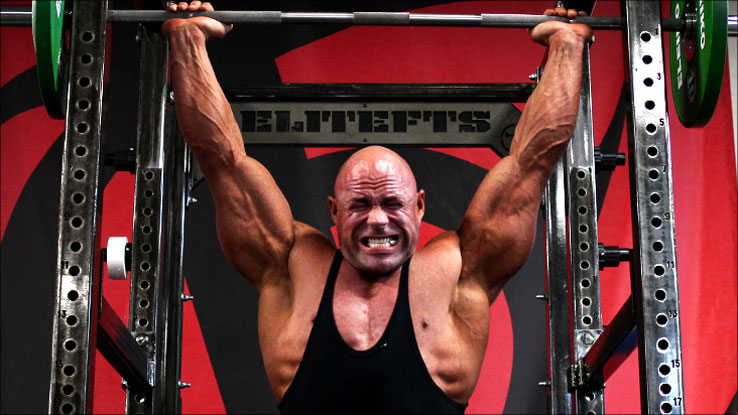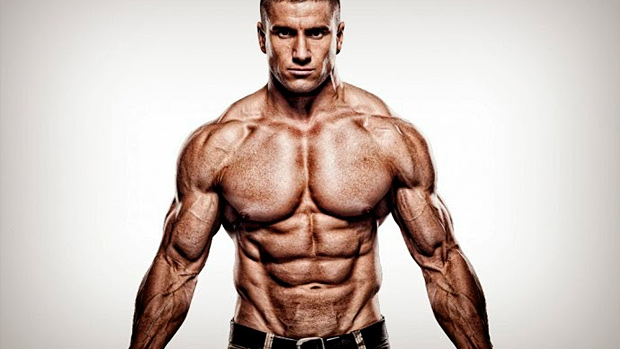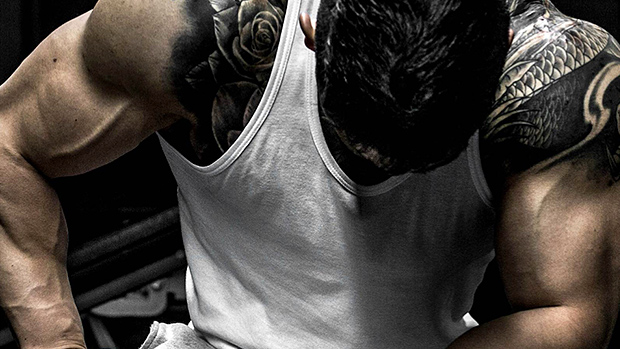Powerful Paws: The Benefits
The hands are a crucial component of most upper body exercises, so possessing powerful paws will help your training all around.
The trouble is, grip training often requires equipment that's not available in mainstream gyms. No worries, serious hand training isn't out of reach. Anyone can build a tremendous grip without devoting a whole lot of extra time to it, or relying on any equipment beyond a basic pull-up bar. All you gotta do is hang.
Beyond the aesthetic appeal of meaty, vascular forearms, single-arm hangs are also great for building tendon and ligament strength in the hands, forearms, and shoulders. The skin on your hands will toughen up as well.
The single-arm dead hang also provides a great stretch for the lats, shoulders and pecs, as well as helping to open the thoracic spine, which are common areas where lifters tend to have limited mobility.

- The Classic Two-Arm Hang: This is an essential skill that any reasonably strong person should be able to do without much difficulty. It's also a great way to establish a baseline of grip strength. If you're a serious lifter and you're not carrying excessive body fat, you should be able to hang comfortably from an overhead bar for a minimum of 60 seconds. Ideally longer.
- The One-Arm Hang: Once that baseline has been established, you're ready to try hanging from just one arm. If you can't meet that 60-second minimum, you'll need to do some remedial two-arm hangs before moving ahead to the one-arm version. Keep doing them until hanging for a minute is no longer difficult. This shouldn't take more than a few weeks of training for someone who's already in decent shape.
It's very simple: Time yourself hanging with just ONE arm for as long as you can. That's it.
- You may grip the bar with your thumb around it or use a false grip with the thumb on the same side of the bar as the rest of your fingers. Either one is fine.
- You can pack your shoulder or you can just dead hang. For the sake of this challenge, we're only interested in how long you can hold on with one hand.
- Your body can be in whatever position that's most comfortable for you. As long as your secondary arm doesn't touch anything (including the arm you're hanging from) and both your feet remain in the air, you're good to go.
- 10 seconds per side is a good starting point for someone new to hanging from one arm. Anything less than that and you're probably better off regressing to the self-assisted version (see below) or continuing to build time on the standard two-arm hang.
- 30 seconds on each arm demonstrates better than average pound-for-pound grip strength and is also a great indicator of shoulder health and overall fitness.
- 60 seconds per arm is an excellent goal to shoot for and something most people will be able to accomplish with consistent practice. If you achieved this on your first attempt, you've obviously been putting in some serious work with your strength training.
- 90 seconds on each side demonstrates an elite level of pound-for-pound grip strength. Very few will achieve this on their initial attempts, though with consistent practice it's certainly possible.

If you aren't able to completely remove a hand on your initial attempts, you can use your secondary arm for an assist by keeping a finger or two on the bar.
If, however, you need more than two fingers for assistance, you aren't ready to approach single-arm hangs yet, so focus on continuing to build your time on two-arm hangs until you're ready.
Single-arm hangs also require (and build) a great deal of shoulder stability, so don't continue the challenge if you begin to experience shoulder pain.
- Make sure to warm up a bit before trying this challenge. If you're new to single-arm hangs, start out by hanging from two arms, then gradually begin to shift your weight to one side while loosening your grip on the other.
- Don't be surprised if you experience a substantial disparity between your two sides. Whether we realize it or not, we all favor our dominant hand to some degree. Single-arm hangs are a great way to identify and eradicate these imbalances.
- For the purpose of this challenge, do your one-arm hangs at the beginning of your workout after a brief warm-up in order to maximize your efforts. If you'd like to increase your hang time, however, adding supplemental hanging work at the end of your training is a great way to finish your session.
- Simply adding one or two sets of one-arm (or two-arm) hangs at the end of an upper-body workout can dramatically improve your grip strength over the course of several weeks. Aim to do these holds to the point of discomfort, but stop a bit shy of muscular failure in order to avoid neurological burnout. The challenge itself should only be attempted once every several weeks.
Bar Size
Keep in mind that the thickness (and slickness) of the bar will impact the difficulty, with thicker, slicker bars posing a greater challenge. The ideal bar thickness for most people is between 1-1.5 inches in diameter, though folks with larger hands may do better with thicker bars.





